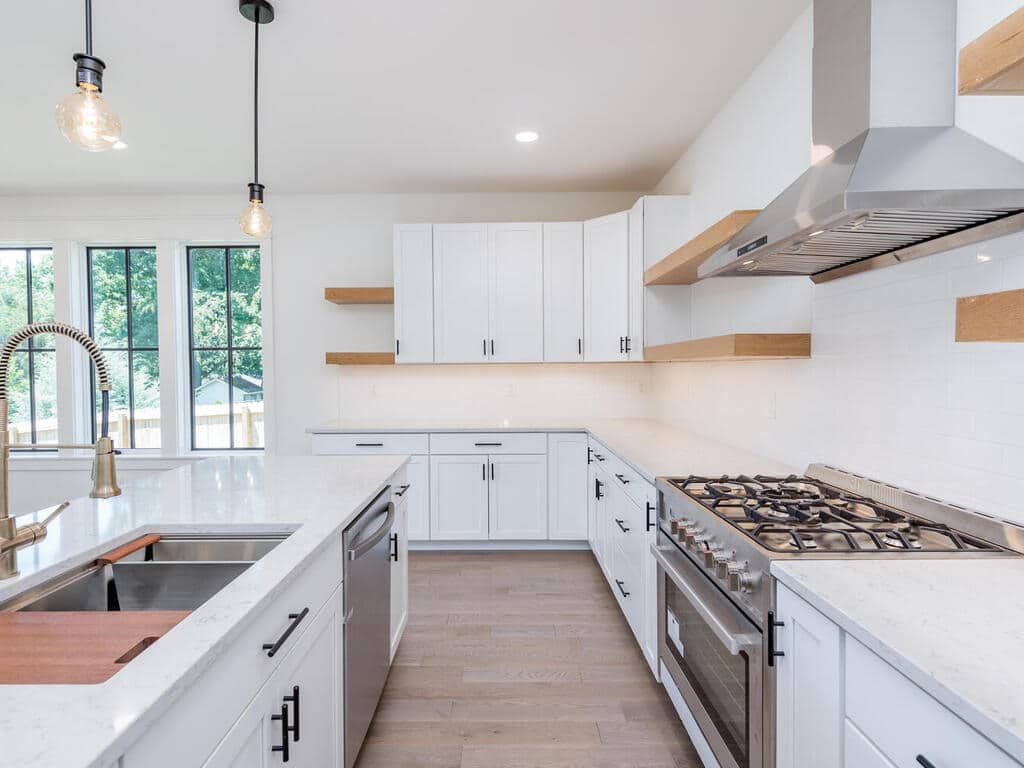Real estate photography plays a crucial role in the process of buying and selling properties, as high-quality visuals often attract potential buyers. The cost of professional real estate photography matters to both sellers and agents, as it could impact the overall marketing expenses. Understanding who pays for these photos and whether they’re included in an agent’s services or covered by the homeowner becomes a significant aspect of the real estate process.
The payment structures and arrangements for real estate photos can vary depending on several factors, such as the location, whether or not the property is listed with an agent, and the chosen photographer. In some cases, agents might include photography as part of their service package, while in other scenarios, sellers could decide to cover the cost for professional photos. With the advancement of technology, new techniques and tools are being utilized in real estate photography, leading to the emergence of diverse pricing models and regional differences.
Key Takeaways
- Real estate photography costs can vary, and understanding who pays for them is important in the buying and selling process.
- Payment structures can depend on factors like location, agent services, and photographer choice.
- The role of technology and regional differences contributes to evolving pricing models in real estate photography.
Understanding Real Estate Photography Costs
Real estate photography plays a crucial role in the marketing and selling process of a property. High-quality photos attract potential buyers and can ultimately influence the final sale price. In this section, we will explore the costs associated with real estate photography and who typically bears these expenses.
Seller Pays
In most cases, the seller is responsible for covering the costs of real estate photography. This expense is often incorporated into the listing agreement and is considered part of the marketing budget for the property. A professional real estate photographer may charge between $110 to $600 per project, depending on their experience and the type of property being photographed.
When a seller decides to list their property with a real estate agent, the agent’s commission typically includes marketing expenses, such as photography. This means that the seller is indirectly paying for the photos through the agent’s commission. However, in some cases where the seller opts for a “For Sale By Owner” (FSBO) approach, they might directly hire and pay for the services of a real estate photographer.
Buyer Pays
It is quite rare for a buyer to pay for real estate photography. The industry standard dictates that the seller or their agent handles the cost. However, there are some instances where a buyer may choose to have additional photos taken, maybe to capture specific features or angles not included in the property’s MLS listing. In such cases, the buyer might pay for these additional photos. This scenario is not common and generally occurs only under unique circumstances.
To recap, the costs associated with real estate photography are typically borne by the seller, either directly or indirectly through the listing agent’s commission. In rare instances, a buyer might pay for additional photos to showcase specific aspects of the property. Understanding the costs and responsibility for real estate photography can help sellers and buyers navigate the property listing and sale process more effectively.
Payment Structures and Arrangements
Exclusive Rights VS Non-exclusive Rights
In the real estate industry, the payment structures for real estate photography may differ depending on the exclusive rights or non-exclusive rights terms. Exclusive rights refer to an agreement in which the real estate agent or the homeowner acquires full ownership and usage of the photos for their marketing purposes. In such cases, the photographer will not be able to sell or use the photos elsewhere.
On the other hand, non-exclusive rights grant both the photographer and the client limited usage rights for the photos. The photographer may resell the photos or use them for their portfolio, while the real estate agent or homeowner may use them for their property listing and related marketing activities.
The choice between exclusive and non-exclusive rights can impact the overall cost of the real estate photography service. Exclusive rights agreements tend to be more expensive, as the photographer is giving up potential future income from their work.
Flat Pricing
Flat pricing is a common approach when it comes to payment arrangements for real estate photography services. This pricing model involves a fixed price for the entire project, regardless of the size, number, or complexity of the photos taken. Flat pricing structures provide the real estate agent, homeowner, and photographer with a clear understanding of the costs involved, making it a popular choice in the industry.
In most cases, the real estate agent is responsible for paying for the real estate photos as part of their marketing services. As they typically earn a commission on each property sale, this expense is factored into their overall marketing and staging plan for the property. The agent’s commission can range from 3% – 6%, which for a $300k house, would be a profit of $9k – $18k1.
When it comes to the contract between the real estate agent or homeowner and the photographer, it is vital to include specific pricing and payment terms. Explicit details of the arrangement, such as the number of photos, staging requirements, and any additional fees for editing or extra services, should be clearly outlined. This transparency helps to avoid any misunderstandings and ensures all parties are aware of their financial obligations.
Overall, understanding the various payment structures and arrangements for real estate photography is crucial for both real estate agents and photographers. By considering the differences between exclusive and non-exclusive rights and opting for a flat pricing structure, both parties can ensure a smooth and fair transaction.
Footnotes
Role of Technology in Real Estate Photography
Equipment and Software
In the world of real estate photography, the right equipment and software are crucial for producing high-quality images that showcase property locations and attract potential buyers. Professional photographers often use advanced DSLR cameras, capable of capturing stunning, high-resolution images across a wide range of lighting situations. Furthermore, other essential equipment pieces include tripods, wide-angle lenses, and external flashes to improve image stability, field of view, and overall lighting conditions.
Moreover, professional photographers utilize various software programs, such as Photoshop, to enhance and edit real estate photos further. These tools allow them to adjust color balance, remove unwanted objects, and ensure consistent quality across all images associated with a property listing. By using advanced software, photographers can deliver a polished, professional image of a location, whether it’s a high-end apartment in New York or a cozy suburban home.
License and Copyright
An essential aspect of professional real estate photography is understanding and managing licensing and copyright issues. When hiring a professional photographer, real estate agents and property owners often expect to receive a license granting them rights to use the images for marketing purposes. This can include displaying photos on websites like Zillow or Redfin or using them in print materials and presentations.
However, it’s essential to be aware that in most cases, the photographer retains the copyright to the images. This means that while they give a license for particular uses, they still own the underlying rights to the photos. Consequently, property owners and agents cannot resell or distribute the images without the photographer’s permission.
Professionally produced real estate photos offer significant benefits over amateur images, as they highlight a property’s best features, attract potential buyers, and demonstrate the value associated with a location. With the right equipment, software, and know-how, photographers can make a substantial impact in the overall success of a property listing while ensuring copyright protection and proper licensing agreements are in place.
Expanding Real Estate Photograph Techniques in the Market
Real estate photography has evolved significantly over time, with new techniques being developed and adopted in the market. This expansion has led to improved methods for showcasing properties, and two popular approaches are drone photography and aerial photography.
Drone Photography
Drone photography has become a popular choice for real estate professionals. With the advent of affordable and accessible drones, capturing high-quality images from previously inaccessible angles is now possible. This unique perspective offers a competitive edge in the market, as it provides potential buyers with a clearer understanding of the property’s layout and surrounding landscape.
In addition to the impressive visuals, drone photography also provides benefits such as:
- Faster property sales: Properties featuring drone photos tend to sell 68% faster due to their ability to effectively showcase a property’s best features.
- Increased online views: HDR (high dynamic range) drone photos have been shown to increase online views of listings by 118%.
Aerial Photography
Aerial photography is another popular technique in the real estate industry. It involves capturing images from a higher altitude using a camera attached to an aircraft or helicopter. Aerial photography allows for a more comprehensive view of a property and its surroundings, making it ideal for large estates, commercial properties, or properties with extensive land.
Some advantages of aerial photography include:
- Comprehensive perspective: Aerial photography provides a complete overview of a property, allowing potential buyers to visualize the entire layout and appreciate its unique features.
- Enhanced marketing materials: High-quality aerial images can be used in various marketing materials, such as brochures, websites, and social media posts, to attract more potential buyers.
By incorporating these advanced techniques into their marketing strategies, real estate professionals can offer more captivating visuals and, ultimately, generate more interest in their listings. With drone and aerial photography at their disposal, agents are better equipped to showcase the best aspects of a property and increase its chances of selling quickly and for a higher price.
Exploring Regional Differences in Real Estate Photography
New York
The real estate photography market in New York is highly competitive due to the city’s dense population and high property prices. Professional photographers in this area often offer a range of services, including aerial and drone photography, virtual tours, and twilight sessions. According to RubyHome, the average cost of real estate photography in New York can range from $150 to $600, based on factors such as:
- Property size and location
- Photographer experience and reputation
- Additional services (e.g., video, virtual tours, etc.)
It is common for real estate agents in New York to cover the cost of professional photography as part of their services, which are typically included in their commission for selling the property.
Phoenix
Real estate photography in Phoenix, Arizona, shows some differences compared to New York. With a generally lower cost of living and less expensive properties, the pricing for real estate photography services is often more affordable. Based on data from RubyHome, the average price for real estate photography in Phoenix ranges from $100 to $500, with the same factors affecting the cost as in New York.
In Phoenix, it’s still typical for real estate agents to cover the photography costs as part of their services, but the prevalence of “For Sale by Owner” listings may lead some sellers to cover the costs themselves. As with other regions, the quality of photography is considered a crucial component in the marketing and sale of properties.
Editing, Presentation, and Effectiveness of Real Estate Photos
Staging and Visual Appeal
Staging plays a crucial role in enhancing the visual appeal of a property. It involves cleaning and organizing rooms in a presentable way, ensuring that the space looks attractive to potential buyers. According to Zillow, a well-staged home will include a focus on the master bedroom, kitchen, living room, and bathrooms. This helps in highlighting the property’s most significant features and increasing its perceived value.
Good quality real estate photos are essential for capturing the attention of potential buyers. They should be able to convey the property’s unique features and overall atmosphere. A professional photographer can ensure that the photos are taken with the right equipment, lighting, and angles to showcase the property in its best light. Investing in professional photos typically costs between $150-$200, depending on the market.
Editing and Post-Production
In the post-production stage, particular attention should be paid to brightness, color, and overall image quality. Software like Adobe Lightroom and Photoshop can be used to perform brightness and color corrections, enhancing the appeal of real estate photos. According to PhotoUp, the top techniques for editing real estate photos include:
- Brightness and color correction
- Removing unwanted objects
- Lens corrections
- Adjusting white balance and exposure
- Cropping and straightening
Although professional real estate photo editing might involve additional costs, it is often a worthwhile investment. High-quality edited photos can lead to increased property viewings and potentially faster sales. This is especially true for mid-to-high range properties, where presentation and visual appeal play a significant role in attracting potential buyers.
In conclusion, the combination of effective staging, professional photography, and skillful editing can contribute to the effectiveness of real estate photos. High-quality images can potentially speed up the selling process and improve the property’s perceived value. Therefore, it is advisable for real estate agents and sellers to invest in professional services to ensure their property is presented in the best possible light.
Conclusion
In the realm of real estate, photography plays a crucial role in marketing and showcasing properties. Understanding who pays for real estate photography is essential for both agents and homeowners. Typically, real estate agents are responsible for covering the photography expenses, as it’s a necessary marketing cost to sell a property.
When it comes to the cost of real estate photography, several factors influence the final price. Factors such as the photographer’s experience, the size of the property, and the extent of services all determine the overall cost. It’s important for agents and homeowners to consider these aspects when deciding on a photographer.
Moreover, real estate agents are required by the NAR’s 2020 Code of Ethics and Standards to present a true representation of the property in all marketing promotions. This responsibility further emphasizes the importance of investing in professional real estate photography to ensure the property’s accurate portrayal.
In conclusion, although the responsibility for real estate photography expenses primarily falls on the agent, homeowners should be aware of the factors that influence the cost and quality of the service. By understanding the significance of professional photography in the real estate market, agents and homeowners can make informed decisions that ultimately lead to more successful property sales.
Frequently Asked Questions
Do agents cover photo costs?
In most cases, real estate agents cover the cost of professional photography as part of their marketing strategy for a property. They understand the importance of high-quality photos in attracting potential buyers and increasing interest in the property. However, this arrangement may vary, and it is always advisable to discuss the specifics with the agent involved.
Who pays for staging?
Staging refers to preparing a property for sale by making it more appealing to potential buyers. In general, the seller is responsible for covering the cost of staging. Sometimes, sellers work directly with professional stagers, while in other instances, agents might facilitate the process and include staging as part of their services. The cost and responsibility for staging can be negotiated as part of the listing agreement.
Do sellers pay for cleaning?
Sellers are typically responsible for cleaning their property before it is listed for sale. A clean and well-maintained home is more likely to attract potential buyers and make a positive impression. In some cases, agents might offer cleaning services as part of their listing package, in which case the cost could be negotiated and shared between the seller and agent.
What are real estate photo laws?
Real estate photo laws pertain to the ownership, usage, and distribution of photographs taken of properties for marketing purposes. Typically, the photographer retains copyright ownership of the images, while the agent or seller acquires a license to use these photos for marketing. It is crucial to have a clear understanding of licensing agreements, image usage rights, and any restrictions that may apply to avoid potential legal issues.
How much do photos cost?
The cost of professional real estate photography can vary depending on factors such as location, property size, and the specific needs of the project. Prices may range from $150 for a small property with a limited number of images to several hundred dollars for larger properties or additional services such as aerial photography or virtual tours. It’s essential to research and compare photographers to find one that fits your budget and desired quality level.
Can sellers take their own photos?
Sellers can choose to take their own photos for real estate listings; however, the quality of these images may not be on par with professional photographs. High-quality real estate photos have been proven to generate more interest and lead to quicker sales than amateur photos. Hiring a professional real estate photographer is recommended to showcase the property at its best and attract potential buyers.



